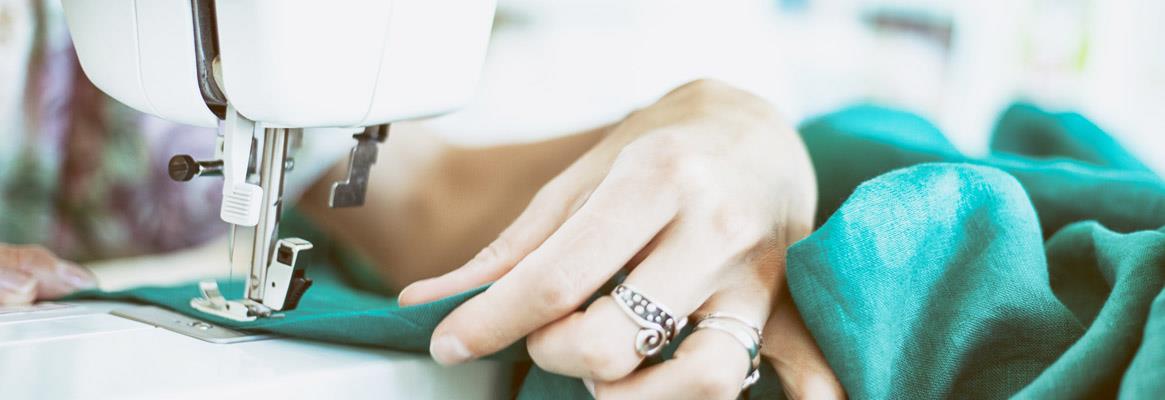The latest trends to keep up with as we continue the new year.
1. Upcycling and Recycling
 Recycling and Upcycling are two of the biggest trends of the new year. Bionic Yarn and Sea2See are just two suppliers that have been recycling and upcycling plastic from the ocean into new apparel. From eyewear to winter coats, plastic waste has been incorporated into new products and even used to create new polyester fabrics and yarns for future consumption. Furthermore, certifications exist such as the Upcycle Carbon Footprint Certification to ensure certified upcycled materials are made from scraps and waste. These certified upcycled materials must be in good quality and eco-friendly by producing less of a carbon footprint than it would be to produce virgin material. SynZenBe and Eileen Fisher are the first companies to receive this Certification and have been working hard towards creating a greener and cleaner planet.
Recycling and Upcycling are two of the biggest trends of the new year. Bionic Yarn and Sea2See are just two suppliers that have been recycling and upcycling plastic from the ocean into new apparel. From eyewear to winter coats, plastic waste has been incorporated into new products and even used to create new polyester fabrics and yarns for future consumption. Furthermore, certifications exist such as the Upcycle Carbon Footprint Certification to ensure certified upcycled materials are made from scraps and waste. These certified upcycled materials must be in good quality and eco-friendly by producing less of a carbon footprint than it would be to produce virgin material. SynZenBe and Eileen Fisher are the first companies to receive this Certification and have been working hard towards creating a greener and cleaner planet.
2. Organic Fabrics
Reduction of harmful chemicals has become a major goal of many in the fashion industry. Organic clothing is made without the use of pesticides, carcinogens, and other harmful chemicals that may impact the environment. These fabrics help detoxify the Earth and help protect its occupants from the health hazards that come with the use of harmful chemicals.
3. Deadstock Fabrics
Use of deadstock fabrics allows for maximum originality because the pieces made from deadstock fabrics are either original or in very limited supply. This is because deadstock fabrics are materials that are no longer being used (they are unsold, damaged or otherwise deemed unusable) and thus exist only in limited supplies. Bode is famous for using deadstock fabrics in their collections turning hundred year old quilts into jackets, and making use of even more unconventional, vintage, and discarded fabrics such as grain sacks, table clothes, and mattress covers.
4. Fashion Technology
Allowing for smarter sales and more personalized sale experiences, AI has helped the fashion industry by predicting future fabric demands and ultimately reducing the amount of waste between what is produced and what is sold. Technology has also become wearable. Loomia infuses their clothing with heat generating panels while FitBit has teamed up with Tory Burch to create stylish smartwatch jewelry. Need more? Amazon's Echo Look and Coded Couture by Ivyrevel are just two of the latest apps capable of giving users expert fashion advice!
5. Fabrics Made Out of Food Waste
 Sustainable apparel manufacturers have turned to food waste as a resource. Agraloop (from Circular Systems), Green Whisper, and Orange Fiber are just a few of those turning agriculture and food waste into fibers and fabrics. These programs take wastes from crops like bananas, pineapples, flax, hemp, sugarcane, and even citrus juice, and spins them into a natural fiber which can in turn be made into fabric.
Sustainable apparel manufacturers have turned to food waste as a resource. Agraloop (from Circular Systems), Green Whisper, and Orange Fiber are just a few of those turning agriculture and food waste into fibers and fabrics. These programs take wastes from crops like bananas, pineapples, flax, hemp, sugarcane, and even citrus juice, and spins them into a natural fiber which can in turn be made into fabric.
6. Vegan Fabrics
Vegan fabric alternatives are eco-conscious, cruelty free and budget friendly but those aren't the only positives. Vegan suede is water damage resistant, vegan leather demands lower maintenance, and vegan silk remains static-free, temperature adaptable, and low maintenance. Our very own Faux Fur and Brushed Fabrics and Velour Suedes collections contain some of the best vegan fabrics sure to inspire and transform your next collection.
7. Jacquard
Created on electric looms, Jacquard is a luxury fabric that can be traced back to the Byzantine years. With intricate woven patterns and high contrast colors, jacquard fabrics allow their wearer to stand out. Elegant and luxurious, this textured fabric has been making a comeback into modern fashion especially in regards to dresses.
This article has been posted with permission from synzenbe.com








Comments